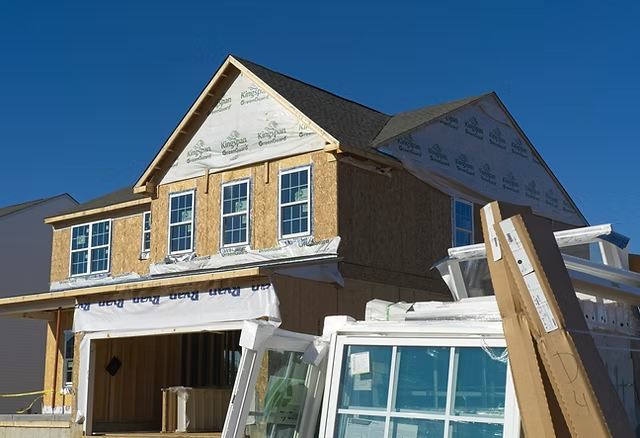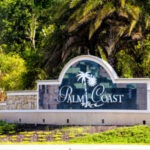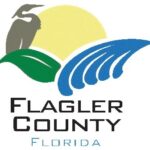A comprehensive look at impact fees, property taxes, and home values across the region
Behind every home purchase lies a complex web of costs—from one-time fees paid by builders to annual property tax bills that arrive each fall. Understanding where Palm Coast and Flagler County fit in this regional landscape can mean the difference between stretching a budget thin or finding an affordable place to call home.
Understanding Impact Fees
Impact fees are one-time charges that builders pay to local governments when constructing new homes. These fees fund infrastructure (the basic facilities and systems a community needs)—such as roads, parks, fire stations, and water systems—that new residents will use. While developers write the checks, these costs typically flow through to homebuyers in the form of higher purchase prices.
The amounts vary dramatically across Northeast Florida, with some communities charging thousands more than others for the same house.
Note: All figures represent data available as of October 2025. For the most current information, residents, buyers, or those considering the area should contact local government offices directly, as rates and fees change as communities respond to growth and infrastructure needs.
https://flaglerpa.com/millage-rate/
https://vcpa.vcgov.org/files/historical/2025/trim/proposedtaxingauthoritymillagerates2025trim.pdf
https://www.sjcfl.us/sjc-reminds-public-of-millage-rates-set-by-different-taxing-authorities/
https://www.jacksonville.gov/departments/property-appraiser/millage-rates
https://docs.palmcoastgov.com/departments/building/appimpactfeesummary.pdf
https://www.sjcfl.us/wp-content/uploads/2024/02/FeeSchedule.pdf
Palm Coast’s Recent Fee Increases
In June 2025, Palm Coast made headlines by dramatically raising its impact fees. City officials approved increases totaling approximately $5,881 per single-family home across fire, parks, and transportation categories (types of services). The city claimed “extraordinary circumstances”—rapid population growth and extreme inflation—to bypass Florida’s standard 50 percent cap on fee increases.
The fire service fee jumped 117 percent, while parks and transportation fees saw similar substantial hikes. After these changes, Palm Coast now charges a combined $8,928 in impact fees for single-family homes. Additionally, the city increased water impact fees by 8.93 percent annually through 2027 and wastewater impact fees by 12.49 percent through 2025.
The Flagler Home Builders Association has filed a lawsuit challenging these increases, arguing the city violated state law and that the claimed “extraordinary circumstances” don’t meet legal standards.
Comparing Impact Fees Across the Region
From Lowest to Highest:
Flagler County (unincorporated areas): $5,306 for single-family homes—the most affordable option in the immediate vicinity. This combined fee includes education, parks, and transportation impact fees.
Palm Coast: $8,928 after the 2025 increases. This represents the middle tier in the region, significantly higher than unincorporated Flagler but lower than premium markets.
St. Johns County: Between $8,259 and $11,796, depending on home size. Houses smaller than 1,800 square feet pay the lower rate, while larger homes pay more. These rates represent increases of 13.5 to 16.5 percent from previous levels.
Volusia County: The county assesses five types of impact fees—transportation, education, parks and recreation, emergency medical services, and fire rescue. Volusia County Schools’ impact fees are $6,045 for single-family homes, $2,727 for multi-family units, and $1,056 for mobile homes. The county completed an impact fee study in 2022 and expects to update fees again in 2026.
Jacksonville (Duval County): Jacksonville uses “mobility fees” (a type of impact fee focused on transportation) rather than traditional impact fees. The amounts vary by location and development type, calculated through an online calculator system.
For perspective, Orange County in Central Florida charges approximately $27,000 in impact fees—among the state’s highest.
Property Tax Rates: A More Complex Picture
Property taxes, the annual charges homeowners pay based on their property’s value, show different patterns across Northeast Florida. These rates are measured in millage (the tax rate per $1,000 of property value).
Duval County/Jacksonville: Average effective property tax rate of 0.80 to 0.85 percent. Jacksonville’s total millage rate stands at 17.865 mills, which includes rates from multiple taxing authorities (government bodies that collect taxes)—the city, county, school board, and special districts.
Flagler County: Operating millage rate of 7.9945 mills for fiscal year 2026, with a total rate of approximately 8.3343 mills including debt service. This translates to an effective rate of about 0.78 percent. Property values in Flagler County recently increased nearly 13 percent, meaning many homeowners saw tax increases between 3 and 10 percent even without rate changes.
St. Johns County: Median property tax of $2,702 per year, with an average effective tax rate of 0.92 percent. The general fund millage rate is approximately 4.4180 mills, with additional taxes for specific services depending on location. Recent increases meant homeowners saw tax bill increases between $80 and $200.
From Lowest to Highest Effective Rates:
- Flagler County: 0.78%
- Duval County: 0.80-0.85%
- St. Johns County: 0.92%
While these differences may seem small, they add up significantly over time. On a $350,000 home, the difference between Flagler County’s 0.78 percent and St. Johns County’s 0.92 percent means about $490 more in annual taxes.
Home Values: Where the Affordability Gap Widens
The most dramatic differences across Northeast Florida appear in home prices themselves.
Median Home Prices (2025):
Duval County/Jacksonville: $340,000 median price (August 2025). Jacksonville offers some of the region’s most affordable housing, with median home values around $203,000 in many areas.
Palm Coast/Flagler County: Median prices range from $348,000 to $365,000, depending on the specific area and time of measurement. Palm Coast’s median home price was $356,884 in June 2025, with a price per square foot of $198. The county overall shows similar figures, with Flagler County’s median at $359,530.
St. Johns County: Median prices between $480,000 and $520,000, depending on the source and timing. Some reports show typical home values at $518,927. The price per square foot ranges from $269 to $312, significantly higher than Palm Coast’s $198.
From Lowest to Highest:
- Jacksonville/Duval County: $203,000-$340,000
- Palm Coast/Flagler County: $348,000-$365,000
- St. Johns County: $480,000-$520,000
This means a typical home in St. Johns County costs approximately 27 percent more than a comparable home in Palm Coast—a difference of $120,000 to $160,000 on a median-priced home.
Utility Rates: The Monthly Bills
Utility rates add another layer of monthly costs that vary by community. The numbers below dictate services provided and their prices; bills may be higher than what is listed due to other administrative fees, usage amounts, and other factors.
Palm Coast: The city approved utility rate increases of 8 percent in April 2025 and another 8 percent in October 2025, with annual adjustments based on the Consumer Price Index (a measure of inflation) starting in October 2026. For an average customer using 2,730 gallons of water, the monthly bill totals approximately $153.18, which includes water ($75.92 for about 50 percent of the bill), garbage ($33.30 for 22 percent), stormwater ($32.87 for 21 percent), and irrigation ($11.09 for 7 percent).
Ormond Beach: The city approved utility rate increases effective October 2025. Residential customers who use 6,000 gallons will see an average increase of $4.96 per month. Water rates increased by 62 cents per 1,000 gallons for users consuming 3,000 to 6,000 gallons monthly, and 72 cents for those using 7,000 gallons or more.
St. Johns County: Annual solid waste fees are increasing significantly. In October 2025, residents’ bills will increase by $80 per year from the current $254. By 2030, homeowners can expect to pay $454 annually—$200 more than current rates over five years.
What It All Means for Homebuyers
Palm Coast and Flagler County occupy a middle position in Northeast Florida’s cost landscape. The area ranks:
- Middle-to-high for impact fees: After 2025 increases, Palm Coast sits between affordable unincorporated Flagler County and premium St. Johns County.
- Low-to-middle for property taxes: Flagler County’s effective rates compete with or beat neighboring counties.
- Low for home values: Palm Coast offers the region a somewhat affordable housing option among major markets, with prices approximately 27 percent lower than in St. Johns County.
For prospective homebuyers, this creates a trade-off. Higher upfront development costs through impact fees mean builders face larger initial expenses, potentially raising home prices. However, significantly lower ongoing home prices and competitive property tax rates can offset these costs over time.
A family purchasing a median-priced home in Palm Coast versus St. Johns County would save approximately $120,000 to $160,000 on the purchase price. Even with slightly higher impact fees built into the cost, that savings could cover decades of property tax differences.
The Broader Context
These cost differences don’t exist in a vacuum. They reflect each community’s growth patterns, infrastructure (basic facilities and systems) needs, and policy choices about who pays for development.
Fast-growing areas like Palm Coast face pressure to fund new infrastructure quickly, leading to higher impact fees. Communities with established infrastructure and slower growth, like some parts of Jacksonville, can maintain lower fees. Premium markets like St. Johns County command higher home prices partly due to location, schools, and amenities (features that make an area desirable), but also because previous development helped build out infrastructure.
As Northeast Florida continues growing rapidly, these cost structures may shift. Communities compete not just for residents but for the right balance between funding growth and maintaining affordability.
Looking Ahead
For families making decisions about where to live in Northeast Florida, the numbers tell a clear story: Palm Coast and Flagler County offer a middle path—not the absolute cheapest options for development, yet somewhat affordable for actual homeownership.
The question each family must answer is which factors matter most. Lower home prices may outweigh higher impact fees for buyers planning to stay long-term. Conversely, renters and short-term residents might care more about utility rates than home values.
As these communities continue evolving, staying informed about fee changes, tax rates, and market trends helps families make decisions that align with their financial situations and long-term goals.
Note: All figures represent data available as of October 2025. For the most current information, residents, buyers, or those considering the area should contact local government offices directly, as rates and fees change as communities respond to growth and infrastructure needs.










Thank You for the data provided…
I’m seeing impact fees at $10,104 plus the transportation fee of $3.77 per square foot for single family homes in Palm Coast. Impact fees are $19,529 for a 2,500 SF home. This includes $3,164 for Parks & Rec, $942 for Fire, $5,450 for school, $268 for Library, $218 Law Enforcement, $62 for the county emergency, plus the per SF fee for transportation I mentioned above. Can you please explain how you got the $8,928 total vs the $19,529 I mentioned?